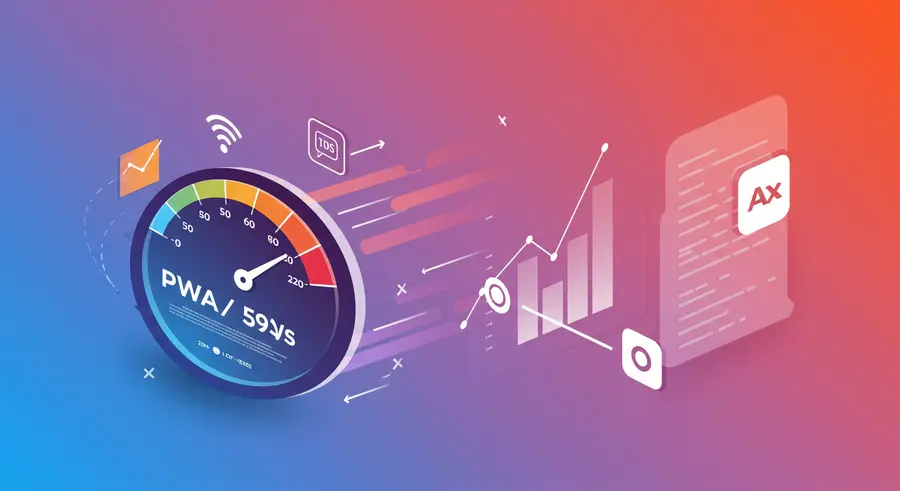PWA Performance Optimization: Achieving Lightning-Fast Web Experiences

In the world of Progressive Web Apps, speed isn't just a feature; it's a foundation. Users expect instant interactions and seamless experiences. Slow loading times can lead to high bounce rates and a poor user experience, undermining all the other benefits a PWA offers. Optimizing PWA performance is crucial for achieving high user engagement and retention. This article will delve into various strategies and techniques to make your PWAs blazing fast.
Understanding Core Web Vitals
Before diving into optimization techniques, it's essential to understand Google's Core Web Vitals. These are a set of real-world, user-centered metrics that quantify key aspects of the user experience. They include:
- Largest Contentful Paint (LCP): Measures loading performance. To provide a good user experience, LCP should occur within 2.5 seconds of when the page first starts loading.
- First Input Delay (FID): Measures interactivity. To provide a good user experience, pages should have an FID of 100 milliseconds or less.
- Cumulative Layout Shift (CLS): Measures visual stability. To provide a good user experience, pages should maintain a CLS of 0.1. or less.
Optimizing for these metrics not only improves user experience but also positively impacts your search engine rankings.
Critical Rendering Path Optimization
The critical rendering path refers to the steps a browser takes to convert HTML, CSS, and JavaScript into an actual usable webpage. Minimizing the time it takes to render the initial view is paramount for perceived performance.
- Minimize and Combine CSS/JS: Reduce file sizes by minifying CSS and JavaScript files. Combine multiple CSS files into one and multiple JS files into one to reduce HTTP requests.
- Asynchronous Loading of CSS/JS: Load non-critical CSS and JavaScript asynchronously using attributes like
deferorasyncfor scripts, or by using<link rel="preload">for critical resources. - Inline Critical CSS: For the CSS required for the "above-the-fold" content, consider inlining it directly into the HTML. This avoids an extra round trip for fetching the CSS file.
Leveraging Caching Strategies with Service Workers
Service Workers are at the heart of PWA performance, enabling robust caching strategies that can deliver content instantly, even offline.
- Cache First: For static assets like HTML, CSS, JavaScript, and images, a cache-first strategy is ideal. If the asset is in the cache, serve it immediately; otherwise, fetch from the network and then cache it.
- Network First (with Cache Fallback): For dynamic content that changes frequently, a network-first approach might be better. Try fetching from the network first; if it fails (e.g., offline), then serve from the cache.
- Stale-While-Revalidate: This strategy serves cached content immediately and simultaneously fetches a new version from the network in the background to update the cache for future requests.
Implement these strategies carefully to ensure users always get the latest content while benefiting from offline capabilities. For those dealing with large datasets or complex financial models, effective caching can significantly speed up data analysis, similar to how AI-powered market insights platforms leverage sophisticated data handling for quick insights.
Image Optimization
Images often account for a significant portion of a page's total weight. Optimizing them is crucial for performance.
- Compress Images: Use tools to compress images without significant loss of quality.
- Responsive Images: Use the
<picture>element orsrcsetattribute to serve different image sizes based on the user's device and viewport. - Lazy Loading: Implement lazy loading for images that are not immediately visible in the viewport. This defers loading until the user scrolls them into view.
- Next-Gen Formats: Convert images to modern formats like WebP, which offer superior compression and quality characteristics.
Code Splitting and Tree Shaking
Reducing the amount of JavaScript that needs to be parsed and executed is vital.
- Code Splitting: Divide your JavaScript bundle into smaller chunks that can be loaded on demand. This ensures users only download the code they need for the current view.
- Tree Shaking: Eliminate dead code from your JavaScript bundles. Modern bundlers like Webpack and Rollup can automatically remove unused exports from your modules.
Performance Auditing with Lighthouse
Regularly audit your PWA's performance using tools like Google Lighthouse. Lighthouse provides a comprehensive report on various aspects of your web app, including performance, accessibility, SEO, and PWA compliance, offering actionable recommendations for improvement.
By implementing these performance optimization techniques, you can ensure your Progressive Web App delivers an exceptionally fast, reliable, and engaging experience, setting it apart from traditional web applications.